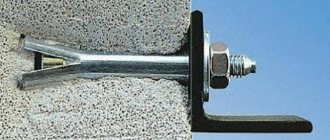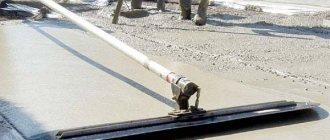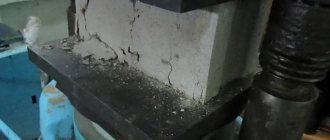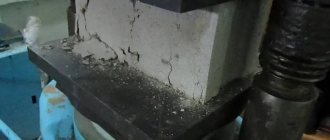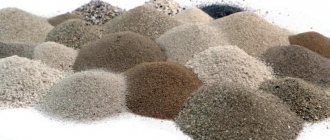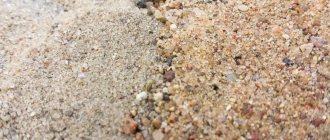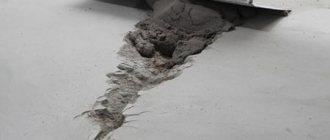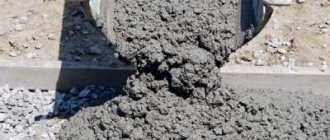Bolt Load Calculation
The bolt head marking usually contains the following data:
- manufacturer's mark (JX, THE, L, WT, etc.); — strength class; - counterclockwise arrow (if left-hand thread).
The first number indicates the nominal tensile strength (tensile strength): 1/100 MPa (1/100 N/mm 2 ;
1/10 kg/mm 2 ). Example: (strength class 9.8) 9*10=900 MPa (900 N/mm2; 91.71 kg/mm2).
The second number indicates the percentage of yield strength to tensile strength (tensile strength): 1/10%. Example: (strength class 9.8) 9*8=720 MPa (720 N/mm 2 ; 73.37 kg/mm 2 ).
According to the current international classification, high-strength bolts include products whose tensile strength is greater than or equal to 800 MPa (800 N/mm 2 ; 81.52 kg/mm 2 ). Accordingly, starting from 8.8 for bolts and 8 for nuts.
Examples of material flow
An example would be a common kitchen fork. By bending it in one direction, you can get a completely different object, which means its fluidity is disrupted, which leads to deformation. In this case, the material only deformed, but did not break, which indicates a high degree of elasticity of the steel. Conclusion: maximum strength is much higher than yield.
A similar practical example would be screwing in a nut: the bolt itself increases in length only after a certain amount of action is applied to it. If the outcome of the experiment is unfavorable, the thread on the fastener may break.
You can watch a thematic video that will show how to test bolts.
Installation conditions and recommendations
The foundation hardware is supported by:
Friction creates a load that acts on the fastener. The foundation is glued to the bolt with glue or mortar; this compensates for the force of impact and ensures its uniform distribution. The acquisition of the necessary elements is carried out after determining by calculation the diameters, lengths and the required quantity for reliable fastening. Parts of small length will be needed in areas not subject to shock and vibration. Bolts with a diameter of 6 cm require an increase in the mass impact on the connection point, and with dynamic forces acting, the parameters are increased.
The type of elements depends on the climate of the region. In the Northern regions with low temperatures, low-alloy steel is used for production.
Builders perform accurate and correct installation according to a previously drawn up detailed diagram. They provide for the distribution of fasteners with a distance between adjacent elements and their immersion in depth. To prevent the foundation from being deformed, the installation is carried out moving away from its edge. According to the standards, the location of the bolts should not be less than the immersion value.
A reliable installation is considered to be the installation procedure at the time the foundation is laid out; the concrete firmly holds the hardware that connects the structure. Place the bolts vertically in the uncured solution at the same depth. After the concrete has hardened, they are tied together using metal strips. The immersion must correspond to the foundation thickness; the product is lowered without exceeding half the value of this parameter.
Production is also carried out in a finished foundation block. For installation, holes with diameters exceeding the size of the bolt are drilled. The master knows the distribution of reinforcement in the base and, when performing the procedure, bypasses these areas so as not to destroy the structure. After the process is completed, the recesses are filled with concrete mixture or adhesive.
Builders consider glue to be a more reliable method for adhesion. Then install the fastener vertically.
Such installation work is used when its production is necessary, but not planned. For this purpose, you will need hardware with conical ends with a thickening on the rod. As the part is tightened, the collet expands with a reliable grip. The fastening is applicable for light objects that do not create vibration processes during operation.
Correctly selected foundation bolts allow entire enterprises to operate without accidents. Competent settlement operations in this area will help to eliminate emergency situations. Directories and regulatory documentation will always point in the right direction; they combine the work of research groups based on examples from emergency situations.
Noticed a mistake? Select it and press Ctrl+Enter to let us know.
Calculation of foundation bolts, characteristic features of use
Calculation of foundation bolts, instructions on the necessary parameters, design data are presented in building codes and regulations. The manual for them contains
Material hardness
Brinell hardness is a characteristic that allows you to determine the hardness of a material.
Stainless steel fasteners are also equipped with special markings on the top of the fastener.
For example, a value of 70 is the most standard and demonstrates the maximum strength of stainless steel fasteners.
Maximum fluidity for stainless steel hardware, often only a reference value.
The fluidity in this case will be 250 N/mm2 for A2-70 and about 300 N/mm2 for A4-80.
The approximate increase will be no more than 40%. In other words, this type of steel perfectly changes shape before irreparable deformation occurs.
Old domestic measurement methods according to GOST did not allow paying due attention to the maximum permissible loads on bolts, so the produced hardware was significantly lower in quality compared to modern ones.
An example to calculate the load on a material as accurately as possible using strength classification:
M12 fastening with strength 8.8, size d2 = 10.7 mm and maximum section length 89.87 mm2. In this case, the maximum permissible degree of load will be: (8*8*10)*89.87;0) = 57520 Newton.
Load chart for carbon steel and stainless steel bolts.
| ST-4.6 | ST-8.8 | A2-70 | A4-80 | |||||||
| THREAD | d2, mm | Area 62, tt2 | Max. load, Newton | Working load, kg | Max. load, Newton | Working load, kg | Max. load, Newton | Working load, kg | Max. load, Newton | Working load, kg |
| M1 | 0,8 | 0,5 | 121 | 322 | 10 | 126 | 151 | |||
| M2 | 1,7 | 2,27 | 544 | 20 | 1 452 | 70 | 567 | 20 | 681 | 30 |
| M3 | 2,6 | 5,31 | 1 274 | 60 | 3 396 | 160 | 1 327 | 60 | 1 592 | 70 |
| M4 | 3,5 | 9,62 | 2 308 | 110 | 6 154 | 300 | 2 404 | 120 | 2 885 | 140 |
| M5 | 4,4 | 15,2 | 3 647 | 180 | 9 726 | 480 | 3 799 | 180 | 4 559 | 220 |
| M6 | 5,3 | 22,05 | 5 292 | 260 | 14 112 | 700 | 5 513 | 270 | 6 615 | 330 |
| M8 | 7,1 | 39,57 | 9 497 | 470 | 25 326 | 1 260 | 9 893 | 490 | 11 872 | 590 |
| M10 | 8,9 | 62,18 | 14 923 | 740 | 39 795 | 1 980 | 15 545 | 770 | 18 654 | 930 |
| M12 | 10,7 | 89,87 | 21 570 | 1 070 | 57 520 | 2 870 | 22 469 | 1 120 | 26 962 | 1 340 |
| M14 | 12,6 | 124,63 | 29 910 | 1 490 | 79 761 | 3 980 | 31 157 | 1 550 | 37 388 | 1 860 |
| M16 | 14,6 | 167,33 | 40159 | 2 000 | 107 092 | 5 350 | 41 833 | 2 090 | 50199 | 2 500 |
| M20 | 18,3 | 262,89 | 63 093 | 3 150 | 168 249 | 8 410 | 65 722 | 3 280 | 78 867 | 3 940 |
| M24 | 21,9 | 376,49 | 90 359 | 4 510 | 240 956 | 12 040 | 94 123 | 4 700 | 112 948 | 5 640 |
| M27 | 24,9 | 486,71 | 116 810 | 5 840 | 311 493 | 15 570 | 121 677 | 6 080 | 146 012 | 7 300 |
| M30 | 27,6 | 597,98 | 143 516 | 7170 | 382 708 | 19130 | 149 495 | 7 470 | 179 394 | 8 960 |
We present to your attention an updated table of maximum loads on stainless materials and high-strength connections.
To be additionally confident in the safety of the load, you can, without a twinge of conscience, divide the load in Newtons by thirty.
Source
Anchor bolt with nut: parameters, installation, GOST
An anchor bolt with a nut is a relatively new type of fastener, the design of which is specially designed to ensure reliable fixation of objects of significant size and weight. When choosing such a bolt as a fastener, you should have a good understanding not only of its technical capabilities, but also of the installation rules, operation and areas of application of this product.
Anchor bolt with nut is used for fastening in concrete, stone and solid brick
BRICK FASTENERS
ANCHORS FOR HIGH AND MEDIUM LOADS
Wedge anchor WAM
For installation in uncracked concrete in the tensile zone of concrete with opening cracks and natural stone. Can be installed into the edges of concrete.
Material: Cold formed carbon steel
Wedge anchor WAM-F
Anchor for heavy and medium loads
Designed for use indoors and outdoors in mildly aggressive environments. The anchor skirt is made of A4 stainless steel.
Material: made of structural steel. Hot zinc.
Wedge anchor WAM-A4
Designed for installation of various structures and equipment outdoors, under water, in conditions of high humidity and aggressive environments (chemical industry)
Material: stainless alloy steel AISI 316 (A4)
Anchor bolt HBM
For installation in concrete, solid brick masonry and natural stone. Can be installed at the edges of concrete and close to other anchors.
Material: cold formed carbon steel. Galvanized 5 microdistrict.
Anchor bolt HNM
Anchor for heavy and medium loads
For installation in concrete, solid brick masonry and natural stone. Can be installed at the edges of concrete and close to other anchors.
Material: cold formed carbon steel. Galvanized 5 microdistrict.
Screw anchor TUS-H
For critical fastenings in concrete without cracks and in tensile areas with cracks. Widely used for the installation of prefabricated metal building structures. Material: cold formed carbon steel. Galvanized 5 microdistrict.
Screw anchor TUS-H-A4
Anchor for high loads
For critical fastenings in concrete without cracks and in tensile areas with cracks. Widely used for the installation of prefabricated metal building structures.
Material: A4 stainless steel.
Screw anchor TUS-I
For critical fastenings in concrete without cracks and in tensile areas with cracks. Widely used for the installation of prefabricated metal building structures.
Material: cold-formed carbon steel. Galvanized 5 microdistrict.
Screw anchor TUS-HP
Anchor for high loads
For critical fastenings in concrete without cracks and in tensile areas with cracks. Widely used for the installation of prefabricated metal building structures.
Material: cold-formed carbon steel. Galvanized 5 microdistrict.
ANCHORS WITH SPACER ZONE
Drive-in anchor DRM-Pro
Anchor for heavy and medium loads
For critical fastenings in crack-free concrete and brickwork. Can be installed near the edge of concrete and close to other anchors.
Material: structural steel with corrosion-resistant Dacromet coating
Drive-in anchor DRM
For critical fastenings in crack-free concrete and brickwork. Can be installed near the edge of concrete and close to other anchors.
Material: Cold formed carbon steel. Galvanized 5 microdistrict.
Design features
The specialists who developed the anchor bolt and nut were guided by the fact that it must withstand significant loads associated with the need to fix objects with large masses on various surfaces. That is why the design of such a fastening element is carefully thought out.
The technical characteristics and load-bearing capacity of an anchor bolt with a nut are determined by the features of its design, the main element of which is the stud. A nut is screwed onto the upper threaded part of the stud, and its lower part is shaped like a cone.
Design of an anchor bolt with a nut
The second most important element of the anchor design is the sleeve, on the side surface of which there are longitudinal slots that form peculiar petals. Such a sleeve, put on the stud, does not cover only its upper part, on which the nut of the product is located.
The principle by which an anchor bolt and nut works is quite simple. It consists of the following: when you tighten the nut placed in the hole of the anchor bolt, its pin is pulled into the hole in the sleeve, opening the petals with its conical end. The high reliability of fixing such fasteners in a pre-prepared hole is also ensured by the fact that its spacer sleeve is made by casting and does not have welds on its surface that weaken its structure. To prevent the nut from deepening into the hole, a lock washer must be placed on the threaded part of the anchor bolt.
The main feature of this anchor is that its conical part and the rod form a single whole
In addition to high load-bearing capabilities, this type of sleeve fastener is also distinguished by its wide versatility, which allows it to be successfully used for mounting objects for various purposes. In particular, this type of fastener is actively used to fix the external unit of an air conditioner, which has a significant mass, to the wall surface.
How to attach?
In order to install an anchor type fastener, no matter with a ring or a hook, you must do the following
- After carefully determining the location (since it will no longer be possible to dismantle the fasteners), using a hammer drill or impact drill, drill a hole corresponding to the outer diameter of the spacer sleeve.
- Remove fragments of material and other slag from the hole; the best result can be obtained using a vacuum cleaner.
- Insert an anchor bolt into the hole, possibly using a hammer.
- When the spacer part of the anchor is completely hidden in the material, you can begin to tighten the spacer nut - you can use pliers for this. If the anchor has a special nut under the ring or hook, it is better to use a wrench and tighten it. The fact that the fastener is completely wedged can be judged by a sharp increase in the resistance of the screwed-in pin.
The following video talks about anchor bolts.
Parameters and requirements of the regulatory document
When choosing anchor fasteners to solve a specific problem, you should focus on the relevant regulatory documentation (GOST), the provisions of which indicate all the parameters of such products. GOST requirements stipulate not only the dimensions and weight of the anchor bolt with a nut, but other technical characteristics (in particular, the level of maximum load that it is able to withstand).
The smallest fastener of this type, according to the provisions of GOST, is an anchor, the dimensions of which are 5x6.5x18 mm. If it is made from high-quality material, it can withstand a load of up to 800 kgf (for tearing). In other words, with the help of such a small anchor, you can fasten an object whose weight is 800 kg. In practice, anchors are usually chosen whose maximum permissible load, specified in the regulatory documentation, significantly exceeds the mass of the fixed product.
In accordance with the main parameters (diameter, length, permissible load level), all anchor fasteners are divided into several classes, which is also specified in the regulatory document for such products.
Installation parameters of anchor bolts with nut
Technical characteristics of anchors
Important parameters of anchor-type bolts are their dimensions. When choosing a fastener by size, you should focus primarily on the weight of the object being fixed with it: the higher this indicator, the longer and thicker the bolt should be. Naturally, the thickness of the structure in which the anchor will be installed should also be taken into account. Otherwise (if the length of the bolt is chosen incorrectly), you can pierce the wall or floor with it.
The minimum length of the anchor bolt studs produced by modern industry starts at 18 mm. This parameter can reach a value of 400 mm. If we talk about the diameter of anchor bolts with a nut, which is calculated by the diameter of the spacer sleeve, then the standard stipulates a minimum value of 6.5 mm. As the length of the stud increases, the diameter of the anchor also increases and can reach 20 mm.
Bolts with the maximum diameter of the spacer naturally have the maximum load-bearing capacity, but when choosing such fasteners, you should take into account the condition and dimensions of the structure in which they are supposed to be installed.
Dimensions and weight
The choice of anchor bolts, like many other products, should be guided by various indicators prescribed in GOST. It is there that the product parameters are described: size, weight, level of maximum permissible load, and so on.
If you carefully consider the provisions of GOST, you can see that the smallest anchor bolt is a bolt with dimensions of 5x18 mm. However, despite this, it can withstand quite heavy loads if it is made of high-quality material.
The size of the anchors is also very important. When choosing, you should focus on the thickness and length recorded in GOST.
Here are some sizes that are used in the production of anchor bolts with nuts:
10x100, 12x100, 8x100, 10x97, 12x150, 20x300, 10x150, 10x77, 8x85, 12x60, 12x129, 10x250, 10x50, 10x60, 6x40, 10x200, 20x15 0, 6x60, 8x40, 12x200, 16x150, 10x120, 16x110, 8x50, 8x120, 12x300, 10x80 mm.
As well as dimensions, indicating the thread diameter: M8x65, M8, M10, M8x35.
Several concepts are used in Gost tables.
- MPF is the minimum pull-out force, which is measured in kilonewtons. It can be in the values 8, 10, 13, 18, 22, 27, 46.
- TotAM is the thickness of the material that will be bolted. This indicator varies greatly within different limits - from the thinnest 5-6 mm to a thickness of 300 mm.
- L is the length of the bolt, namely the rod and the nut on it. Length also has different meanings. Small anchors range in length from 18 to 100 mm. Medium-sized bolts are those from 100 to 200 mm, and the largest anchors reach 360 mm in length.
- H – depth.
- TLotH is the length of the hole into which the anchor must fit.
Judging by this table, we can say that the minimum length of anchors at the moment is 18 mm. This figure reaches its maximum at around 400 mm. The diameter of the sleeve cannot be less than 6.5 mm. In this case, an interesting relationship can be observed - the longer the length of the anchor bolt, the larger its diameter.
Double spacer anchor bolts equipped with a nut
The most effective fastener for fixing objects of significant weight on various surfaces is an anchor bolt with a double-expansion nut. Even from the photos of such fasteners, we can conclude that they have a higher load-bearing capacity compared to conventional anchor bolts.
A design feature of this type of bolt is the use of two bushings at once, mounted on a threaded rod. One of these bushings has a cone-shaped shape and, when the nut is tightened, it enters into the second element, pushing it apart. Thus, inside the mounting hole there are two loosened bushings at once, which significantly increases the load-bearing capacity of the bolt.
Double-expansion anchor is intended for solid materials; use in hollow-core structures is not recommended
The ability of a double-spacer anchor product to withstand significant loads not only of a static but also of a dynamic nature allows it to be successfully used not only in construction and repair, but also in production. In particular, it is with the help of such fasteners that heavy industrial equipment is installed, which during operation creates significant vibration loads.
What kind of anchors are used in hollow bricks?
Chemical Anchor for Hollow Brick
, solid
brick
and concrete ITH 345 Ve Sormat 345 ml is a two-component, fast-curing vinylester-based resin (no styrene).
Interesting materials:
How to make a corner? How is bottled water made? How is green manure made? How to make tea in a samovar? How to make toys from cotton wool? How to make an infusion in a water bath? How to make non-woven fabric? How to clean the Samsung eco drum? How to clean the drum? How to make fertilizer for cucumbers from nettles?
Installation rules
Even if you have chosen the right anchor bolt equipped with a nut, focusing on the size and weight of the object being fixed with it, incorrect installation will reduce all your efforts to nothing. There are a number of simple rules, the observance of which will allow you to provide the fastener with the required level of reliability and durability.
Anchor bolt installation steps
The installation algorithm for an anchor bolt equipped with a nut is as follows.
When choosing anchor bolts as fasteners, you should keep in mind that modern industry produces various modifications of such products. These can be bolts, the upper part of which is made in the form of a ring or hook, which allows the most efficient use of such products for hanging various objects on the surface of the ceiling or walls, pulling cable routes and other communications, as well as for solving a number of other specific tasks.
Source
Chemical anchors
In addition to the above listed structures, chemical anchors are widely used, which are distinguished by their amazing adhesion strength to concrete. The methods for attaching such elements are very simple. They can be carried out with or without an anchor sleeve. As in the usual method, first drill a hole. Then it is cleaned and the anchor sleeve is inserted and filled with adhesive from the gun, and then the metal element is inserted. The same is done, only without the sleeve (Fig. 9). This fastening penetrates deeply into the pores of the base. And when hardened, the anchor is securely connected to the base, forming a monolith.
How does an anchor fastener with a nut work?
Taking into account the fact that this fastening mechanism must hold quite heavy elements, it was carefully thought out and redesigned. The main structural element in it is a spacer pin, which has a cone shape at one end, and a metric thread is cut at the other end, onto which a nut is screwed. The entire length of the stud, except for the threaded part, is fitted with a special metal sleeve with slots.
This device works on the principle of “expansion”, that is, when we start to tighten the nut, the cone-shaped end enters the sleeve and expands it in the hole. A distinctive feature is that such an anchor has a cast pin, which is much stronger than other anchor structures. Well, and, of course, we forgot to mention the nut and, without fail, the lock washer, which are screwed on from the thread side. The washer does not allow the nut to go deeper into the hole when tightening.
In some cases, during fastening, installers use a second washer as an additional lock, which closes the hole at the installation site, but this approach depends on the specific installation conditions.
The scope of application of such fasteners can be quite different: from the installation of stair railings to heavy metal structures. The most popular application today is the installation of brackets for air conditioning. The device itself has quite a decent weight, so the use of such a mount is completely justified.
Overview of species
The classification of driven anchors involves dividing them according to several criteria. It is worth considering that this element has less load-bearing capacity than embedded fasteners and other types of fasteners.
The hammer-in anchor is most in demand in everyday life when hanging structures on the ceiling and walls.
Depending on the type of material used, these fasteners come in several types.
Steel, sheet metal. They are designed for light loads.
Based on the manufacturing features, this type of hardware also has its own classification. Ceiling options are wedged not with a special element, but with a nail. Special anchors are hammered in direct contact with their body - it is put on a prepared wedge. Options with external and internal threads are considered more durable and reliable. Those in which it is present only in the bushing itself are designed for minimal loads.
Separately, it is customary to consider a variety of driven anchors such as “Zikon”. Externally, its design differs little from the traditional one. There is a bushing with 4 slots, a wedge made of structural alloy steel. The only difference is the installation principle of the product. First, a straight and then a conical hole is pre-drilled. A wedge is inserted into it, onto which the sleeve is pushed, the product expands and is firmly fastened in the hole.
Anchor bolt with nut - weight, dimensions: what does GOST tell us?
Since all fasteners are complex installation products, they all have appropriate technical documentation. It is from such documents that we can find out technical parameters if necessary. For example, when choosing this or that fastener, we want to know whether the anchor fastening will withstand a weight of 100 kilograms or not. Thanks to the fact that there is documentation, we will receive an answer to our question.
The smallest anchor, whose dimensions are 5x6.5x18 mm, according to the manufacturer's stated characteristics, is capable of withstanding a pullout load of up to 800 kgf.
To make it clearer, kgf is the designation of kilogram/force, where the calculation takes into account the mass of one kilogram and the force with which this kilogram exerts pressure on the scale. Further calculations are quite simple, 1 kgf is equal to approximately one kilogram of any object, based on this, such an anchor will support a product weighing 800 kilograms.
Also, absolutely any bolt has a corresponding GOST, which divides all fastening structures into varieties according to their ability to withstand a certain load, the size and diameter of the fastening element. On large construction sites, such documentation helps in the selection of fastening elements and the purchase of appropriate materials.
How long can a 16 anchor hold?
Table 1. Dimensions, installation parameters and loads of anchors S-KA and S-KAK
| Marking | Anchor diameter , mm | Loads (compressed zone of concrete C20/25) |
| 16x90 | 16 | 21,8 |
| 16 /5x123 | 16 | 25,1 |
| 16 /20x138 | 16 | 25,1 |
| 16 /50/168 | 16 | 25,1 |
Technical characteristics of anchor bolts
Technical documentation recommends installing such fastenings in solid solid materials, such as concrete, solid brick, natural stone. In each individual case, we must choose a bolt and nut whose dimensions will provide us with high-quality fastening. But it is worth remembering that during installation, when tightening the nut, the stud moves forward a certain distance; as a result, sometimes this length creates an obstacle when installing the products that we are fastening.
Today in stores you can find fasteners of almost any length, for various types of tasks. As a rule, the line of anchor fastenings begins with a stud size of 18 millimeters.
The longest fastener reaches 400 millimeters in net size of the fastening pin. Accordingly, depending on the length, we also have different diameters; this value is calculated by the diameter of the sleeve for which the hole is drilled.
The diameter of the bushing usually starts from 6.5 millimeters, this is, as a rule, the smallest anchor; gradually, as the length increases, the diametrical value also increases; on the longest fastening, the bushing can be 20 millimeters in circumference, and such fasteners can withstand quite significant loads. If you are interested in the holding force of such fasteners, you can find it out from the technical documentation, we talked about it earlier.
When choosing an anchor, always consider the thickness of the surface on which the installation will be made. Long does not mean durable, and besides, you risk getting a through hole, which is undesirable when installing the fastener.
What load can the collet withstand?
Collet
brass driven M10
collet
M10 (an alternative name for the driven anchor) has an outer diameter of 12 mm and a length of 34 mm, respectively, the hole is drilled with a diameter of 12 and a depth of at least 34. The driven brass anchor
can withstand shear loads
(for B25 concrete) up to 2.1 kN and pull-out capacity up to 2.1 kN.
Interesting materials:
How to install a curtain rod for Roman blinds? How to set a picture on the lock screen? How to set a picture to a WhatsApp group? How to set a picture on a smart watch? How to set an image to full screen on Android? How to set a picture on WhatsApp? How to set a picture in a WhatsApp group? How to install a memory card on Android? How to install a memory card on Honor 7a? How to install a memory card on a computer?
Reinforced version - double-spacer fastener
Due to the fact that consumer requirements are constantly growing, and there is a need for the installation of fairly heavy structures, it was decided to slightly modify the fasteners. This is how a modified product appeared on the building materials market - an anchor bolt with a double-spacer nut. This technology has made it possible to sufficiently increase the holding force of such fastenings.
The design itself is the same pin, but in this case two bushings are used as a holding mechanism, one of which is wedge-shaped and fits into the second bushing. Thus, by tightening the nut, we increase the holding properties, evenly distributing the force along the entire length of the fastener. The double-spacer anchor with a ring uses the same technology in its design, and, as practice shows, quite successfully.
This modified fastening is used mainly in production, but not only in the construction environment. For example, very often this mounting element is used to fasten machine tools in workshops.
Usually, during operation, the machine creates a certain vibration, which, as a rule, is not needed, and if previously the machine was simply attached to the floor using concrete, today the easiest way is to use a universal mount and get rid of unwanted vibration during operation.
Areas of use
The expansion anchor is considered one of the most practical and highly durable means of fixation. It allows you to fix a wide variety of surfaces; the anchor creates the most uniform friction with significant force along the entire length, which ensures increased ability to hold the structure. At the same time, the material of the structure itself must have increased density and a solid base.
Important! If there are internal cracks on the surfaces of the materials where the bolt will be fixed, then the load that the fastener can withstand is reduced many times over. An anchor with spacers is often needed when performing façade fastenings
An anchor with spacers is often needed when performing façade fastenings.
Self-expanding anchor can be used to fix:
- window frames;
- door structures;
- flights of stairs;
- suspended ceiling structures;
- chandeliers and other lamps;
- air ducts;
- fences;
- balustrades;
- engineering communications;
- consoles;
- bank terminals;
- foundation elements.
The mechanism of action of a self-expanding anchor is fundamentally different from the mechanism of action of a dowel. The outer part of the latter is in contact with the back of the hole only at some separately located points, while the spacer bolt is adjacent to it along its entire length.
How to properly install an anchor bolt with a nut - step-by-step diagram
Step 1: Anchor Hole Diameter
Before drilling a hole for the fastening, you need to select a concrete drill for a hammer drill of the required diameter. In this case, first of all, be guided by the dimensions of your mount. It is under no circumstances recommended to drill a hole if the bushing does not fit into it. It is better to go through the same diameter drill again, and the hole will become a little larger. If you drill out the fastening point with a drill of a larger diameter, the bushing can freely “walk” in it, while the spacer mechanism simply cannot perform its holding functions.
Step 2: Clear the mounting area of debris
It is no secret that after drilling, debris remains in the finished hole after using a hammer drill. It is these crumbs and dust that interfere with the installation of the bolt at the installation site. It is especially difficult to install a double-spacer mechanism into an uncleaned hole; such fasteners have a sleeve that is slightly wider than usual. Therefore, before installation, thoroughly clean the hole; if necessary, use a construction or household vacuum cleaner.
Step 3: Correct installation of heavy elements
After you have inserted the bolt into the hole, do not rush to mount your device while tightening the nuts; there is a more practical solution. After installing the anchor, without hanging the product, tighten the bolt with a wrench until it stops. Tightening must be carried out until the pin opens the bushing, and the fastening, so to speak, assumes operating mode. After this, you can place the nut on the studs, which are already firmly held in the mounting hole, install the device, and calmly tighten it with the nuts.
How to choose?
There is no universal fastener, so you need to select wedge anchors based on the following conditions:
- size (thickness of the part that will be attached to the base, and the depth of immersion of the anchor into it);
- how it will be located (horizontally or vertically);
- calculate the expected loads that will affect the hardware;
- the material from which the mount is made;
- parameters of the base into which the stud anchor will be installed.
Also, before purchasing, you need to check the documents and certificates of conformity for the products. This must be done because anchors of this type are used when installing important structures, and not only the integrity of these elements, but also the safety of people largely depends on their reliability.
Bolt Load Calculation
The bolt head markings usually contain the following information:
The first digit indicates the nominal tensile strength (tensile strength): 1/100 MPa (1/100 N/mm²;
1/10 kg/mm²). Example: (strength class 9.8) 9*10=900 MPa (900 N/mm²; 91.71 kg/mm²).
The second number indicates the percentage of yield strength to tensile strength (tensile strength): 1/10%. Example: (strength class 9.8) 9*8=720 MPa (720 N/mm²; 73.37 kg/mm²).
The yield strength value is the maximum permissible working load of the bolt, above which irreversible deformation occurs. When calculating the load, 1/2 or 1/3 of the yield strength is used, with a double or triple safety margin, respectively.
According to the current international classification, high-strength bolts include products whose tensile strength is greater than or equal to 800 MPa (800 N/mm²; 81.52 kg/mm²). Accordingly, starting from 8.8 for bolts and 8 for nuts.
Examples of material flow
An example would be a common kitchen fork. By bending it in one direction, you can get a completely different object, which means its fluidity is disrupted, which leads to deformation. In this case, the material only deformed, but did not break, which indicates a high degree of elasticity of the steel. Conclusion: maximum strength is much higher than yield.
A similar practical example would be screwing in a nut: the bolt itself increases in length only after a certain amount of action is applied to it. If the outcome of the experiment is unfavorable, the thread on the fastener may break.
The percentage of elongation is an average indicator that demonstrates the length of the deformed part before the onset of failure. Figuratively, we can call this kind of bolts flexible, meaning precisely the ability to elongate.
The technical terminology for this is quite simple: elongation is nothing more than the percentage of increase in a sample compared to its original size.
Machine foundation price
If the machine is large and heavy enough, the cost of construction work will be quite significant. It is best to start building the foundation of the machine immediately after concluding a contract for the supply of the machine, by requesting a foundation drawing from the manufacturer. In this case, as a rule, there are 4-8 months to select an experienced work contractor, agree on an estimate and a contract for the manufacture of the foundation
It is important not to delay the start of work until the machine is manufactured. Otherwise, you will have to postpone the start of installation, commissioning and commissioning for the period of approval, production and hardening of the foundation
As a result, this may result in downtime of expensive equipment.
